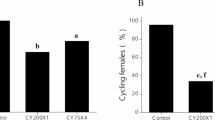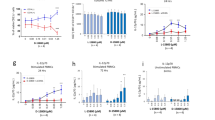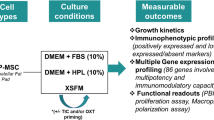Abstract
WHEN guinea pigs are treated with one dose of cyclophosphamide (CY, 300 mg kg−1) 3 d before sensitisation with either ovalbumin in Freund's incomplete adjuvant (OA/FIA) or 2,4 dinitrofluorobenzene (DNFB), the resultant Jones-Mote or contact skin reactions elicited 1 week later are increased in intensity and induration and prolonged as compared to control animals1,2. We have postulated that CY pretreatment depletes a population of cells which normally modulate contact sensitivity and Jones-Mote reactions1,2. If CY was depleting a population of suppressor cells normally present at the time of sensitisation, the passively transferred cells from these animals should be more reactive than if there was no CY given to the donors. Passive transfer of spleen or peritoneal exudate cells (PEC) from animals sensitised with OA/FIA 8 d earlier caused more intense and more indurated reactions in normal recipients when donors had been pretreated with CY 3 d before the OA/FIA sensitisation, when compared with those reactions transferred from sensitised animals which had not received CY (S. I. K., D. P., and J. L. T., unpublished) (Fig. 1). We used the following model for the assay of suppressor cells. Guinea pigs, treated with CY 3 d before immunisation with OA/FIA, served as cell recipients 8 d later. They were then potentially susceptible to the effect of suppressor cells which they were lacking.
This is a preview of subscription content, access via your institution
Access options
Subscribe to this journal
Receive 51 print issues and online access
$199.00 per year
only $3.90 per issue
Buy this article
- Purchase on SpringerLink
- Instant access to full article PDF
Prices may be subject to local taxes which are calculated during checkout
Similar content being viewed by others
References
Turk, J. L., Parker, D., and Poulter, L. W., Immunology, 23, 493 (1972).
Turk, J. L., and Parker, D., Immunology, 24, 751 (1973).
Blazkovec, A. A., Sorkin, E., and Turk, J. L., Int. Arch. Allergy, 27, 289 (1965).
Richerson, H. B., J. exp. Med., 134, 630 (1971).
Loewi, G., Holborow, E. J., and Temple, A., Immunology, 10, 339 (1966).
Turk, J. L., and Poulter, L. W., Clin. exp. Immun., 10, 285 (1972).
Poulter, D. W., and Turk, J. L., Nature, new Biol., 238, 17 (1972).
Cantor, H., Prog. Biophys. molel. Biol., 25, 71 (1972).
Dvorak, H. F., Dvorak, A. M., Simpson, B. A., Richerson, H. B., Leskowitz, S., and Karnovsky, M. J., J. exp. Med., 132, 558 (1970).
Author information
Authors and Affiliations
Rights and permissions
About this article
Cite this article
KATZ, S., PARKER, D., SOMMER, G. et al. Suppressor cells in normal immunisation as a basic homeostatic phenomenon. Nature 248, 612–614 (1974). https://doi.org/10.1038/248612a0
Received:
Issue date:
DOI: https://doi.org/10.1038/248612a0
This article is cited by
-
Mycobacterial disease—a challenge to biotechnology
MIRCEN Journal of Applied Microbiology and Biotechnology (1985)
-
Rosette formation in a system of adoptive transfer of cell populations from donors with an altered serotonin level
Bulletin of Experimental Biology and Medicine (1979)
-
Three forms of delayed skin-test response evoked by mycobacteria
Nature (1978)
-
Stimulation and suppression of contact dermatitis in mice by low-molecular-weight thymus humoral factor
Bulletin of Experimental Biology and Medicine (1978)



